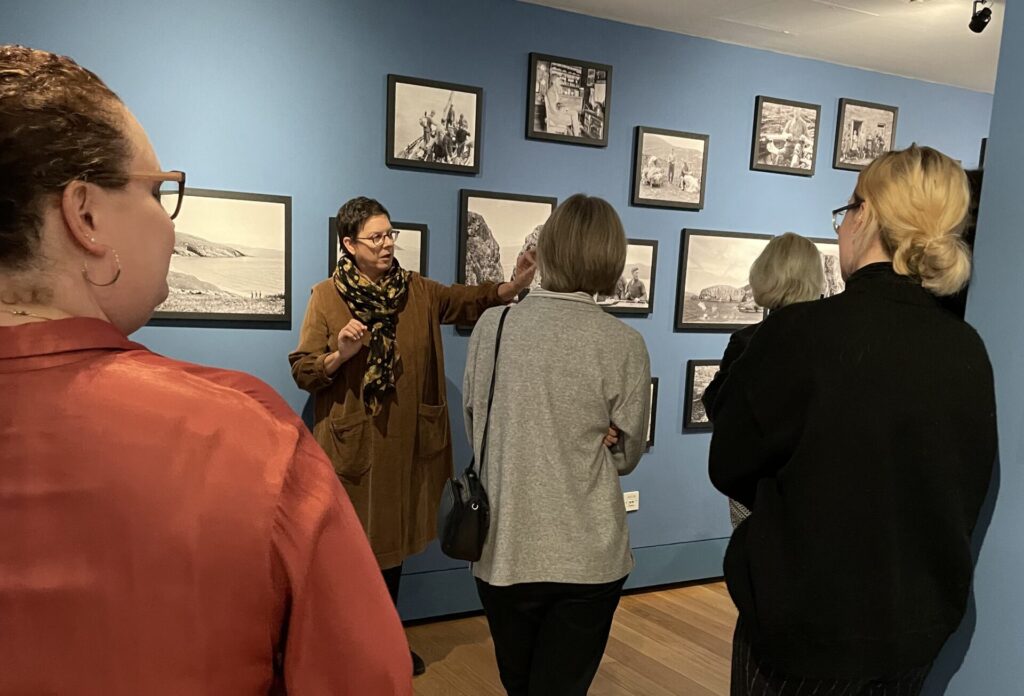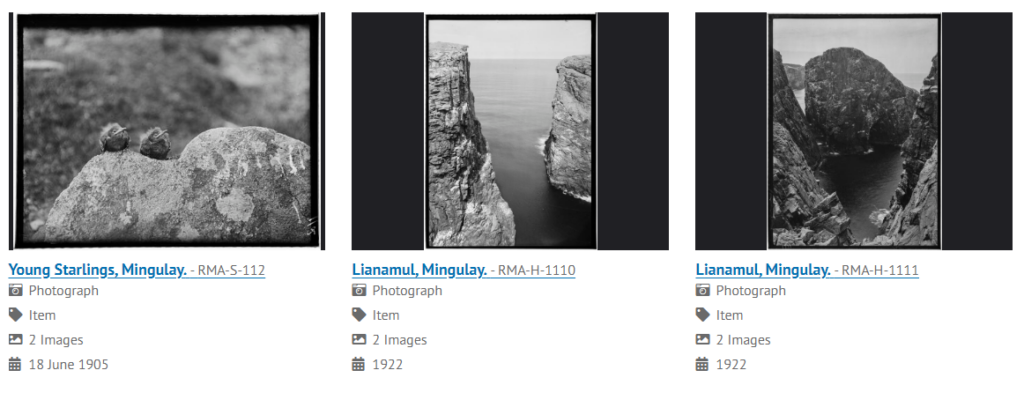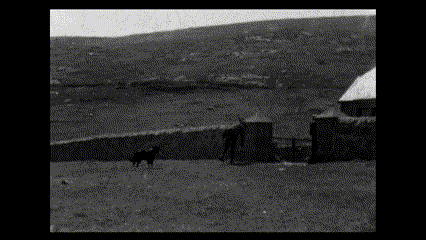What do curators do?
A few months after being appointed Curator of the Photography Collection, I was informed ‘you need to do a Mingulay exhibition.’ This was not an unwelcome surprise but the timescale was tight. We had less than 9 months to plan (most exhibitions are planned at least a year in advance) and although I had managed a couple of exhibition installations, I had not been involved in the process from the beginning. This was going to be a steep learning curve.

Once we assembled the team, things moved quickly. A couple of workshops later, we had identified our themes, target audiences, and what we hoped people would take away from the exhibition. Then, the real work began.
We had just purchased Craig Easton’s portfolio of his Mingulay work – a project inspired by the photographer Robert Moyes Adam who had made two visits to the island, 100 years before. Craig is an award-winning portrait photographer, so for him, this was a bit of learning curve as well. The resulting images are beautiful, ethereal even. Adam’s photographs, of which we hold over 8,000 in the collection, were more straightforward and documentary. To display the two photographers together in an exhibition seemed obvious. But something was missing.

The ’eureka’ moment came when I became familiar with the life and work of Margaret Fay Shaw, an American-born musician and photographer who made her home in the Outer Hebrides. In the early 1930’s Margaret spent summers on Mingulay housekeeping for a group of shepherds who were using the island to graze their flock. She photographed and filmed there, making a lively portrait of both the animal and human inhabitants. This is what we needed! The exhibition was now really beginning to take shape.
It was the challenge of incorporating Margaret’s cine film that completed the last piece of the puzzle. Through our academic partner Peter Mackay, a specialist in Gaelic culture, we commissioned Caledonia TV to create a film that would not only feature the vintage footage, but also create an atmosphere in the gallery. Using oral history clips from former Mingulay residents, music, song and modern drone footage, the team at Caledonia created a beautiful, contemplative piece that transformed and animated the gallery.

Because we designed the exhibition in-house, there were a lot of decisions to be made that all had to come together during the final weeks – everything from selecting and printing the pictures, to the wall colour, the framing, positioning the walls and lighting, designing title graphics and text panels, borrowing period cameras, marketing, merchandise, keeping everyone informed (and occasionally, onside), etc. It’s a relentless whirlwind of activity and effort (by nearly 50 people!) but all visitors see is the finished product.


For all the planning and care and laying-awake-at-night wondering, you never really know if it’s all going to come together as planned. Sometimes, you never know.
At the opening event a student approached me, clearly moved and struggling for words, said, “it’s… it’s so… immersive.”
That’ll do.
Yes, that’ll do nicely, thank you.